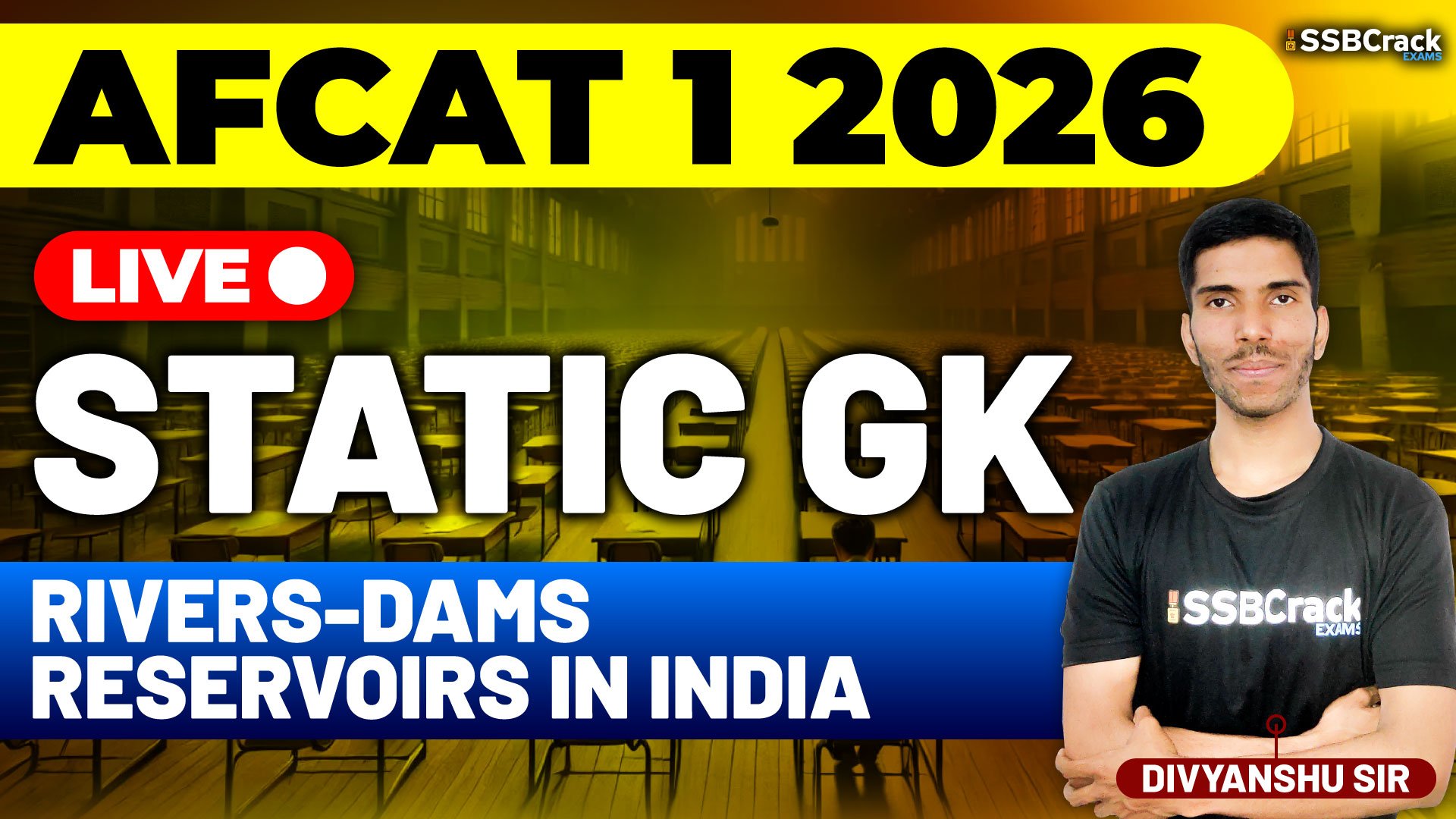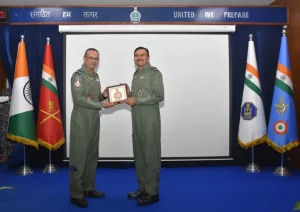Rivers, dams, and reservoirs form an essential part of India’s geography and economy. They play a crucial role in irrigation, hydroelectric power generation, drinking water supply, flood control, and transportation. For the AFCAT 1 2026 Exam, questions from this topic are commonly asked in the Static GK section. Understanding major rivers, their tributaries, and important dams and reservoirs is key for aspirants.
AFCAT 1 2026 Exam Static GK – Rivers, Dams & Reservoirs in India
🏞️ Major Rivers of India
India’s river system is classified into two broad categories — Himalayan Rivers and Peninsular Rivers.
1. Himalayan Rivers
These are perennial rivers fed by glaciers and rainfall.
- Ganga River: Originates from Gangotri Glacier (Uttarakhand); main tributaries — Yamuna, Ghaghara, Gandak, Kosi, and Son.
- Indus River: Originates from Mount Kailash (Tibet); major tributaries — Jhelum, Chenab, Ravi, Beas, and Sutlej.
- Brahmaputra River: Originates from Mansarovar Lake region (Tibet); known as Tsangpo in Tibet and Jamuna in Bangladesh.
2. Peninsular Rivers
These rivers are mainly rain-fed and have seasonal flow.
- Godavari: Known as Dakshin Ganga, it is the longest river in peninsular India.
- Krishna: Second largest river of the peninsula, originating from Mahabaleshwar (Maharashtra).
- Cauvery (Kaveri): Originates from Talakaveri (Karnataka); important for Tamil Nadu and Karnataka.
- Narmada & Tapti: Flow westward into the Arabian Sea, originating from the Satpura ranges.
- Mahanadi: Flows through Chhattisgarh and Odisha, forming a large delta before joining the Bay of Bengal.
💧 Major Dams in India
Dams are vital for irrigation, power generation, and flood control. Below is a list of some important dams frequently asked in competitive exams like AFCAT.
| Dam Name | River | State/UT | Purpose/Importance |
|---|---|---|---|
| Bhakra Nangal Dam | Sutlej | Himachal Pradesh | Hydroelectric power & irrigation |
| Tehri Dam | Bhagirathi | Uttarakhand | One of the highest dams in India |
| Sardar Sarovar Dam | Narmada | Gujarat | Multi-purpose – irrigation & drinking water |
| Hirakud Dam | Mahanadi | Odisha | Longest earthen dam in the world |
| Nagarjuna Sagar Dam | Krishna | Telangana/Andhra Pradesh | Major irrigation project |
| Idukki Dam | Periyar | Kerala | Arch dam, used for power generation |
| Rihand Dam | Rihand (Son River tributary) | Uttar Pradesh | Reservoir – Govind Ballabh Pant Sagar |
| Tungabhadra Dam | Tungabhadra | Karnataka | Joint project of Karnataka and Andhra Pradesh |
| Bhavanisagar Dam | Bhavani River | Tamil Nadu | Used for irrigation |
| Mettur Dam | Cauvery | Tamil Nadu | Salem district; Stanley Reservoir |
🌊 Major Reservoirs in India
Reservoirs are artificial lakes created by damming rivers. They store water for irrigation, power, and domestic use.
| Reservoir Name | River | State | Associated Dam |
|---|---|---|---|
| Gobind Sagar | Sutlej | Himachal Pradesh | Bhakra Dam |
| Hirakud Reservoir | Mahanadi | Odisha | Hirakud Dam |
| Nagarjuna Sagar Reservoir | Krishna | Telangana | Nagarjuna Sagar Dam |
| Tehri Lake | Bhagirathi | Uttarakhand | Tehri Dam |
| Indira Sagar Reservoir | Narmada | Madhya Pradesh | Indira Sagar Dam |
| Sardar Sarovar Reservoir | Narmada | Gujarat | Sardar Sarovar Dam |
| Govind Ballabh Pant Sagar | Rihand | Uttar Pradesh | Rihand Dam |
| Idukki Reservoir | Periyar | Kerala | Idukki Dam |
🧠 Quick Facts for AFCAT 2026
- Longest River in India: Ganga
- Largest River Basin: Ganga Basin
- River known as ‘Sorrow of Bihar’: Kosi
- River known as ‘Sorrow of Bengal’: Damodar
- Highest Dam in India: Tehri Dam (Uttarakhand)
- Oldest Dam in India: Kallanai Dam (Tamil Nadu) built by Chola kings
- Largest Reservoir in India: Indira Sagar (Madhya Pradesh)
✍️ Tips for AFCAT Aspirants
- Memorize rivers and their origin points.
- Link each major dam with its river and state.
- Revise frequently using tables and maps.
- Practice one-liner questions from static GK books and previous papers.
✅ Conclusion
Rivers, dams, and reservoirs are integral to India’s geography and development. For AFCAT 1 2026, candidates should focus on learning key facts such as river origins, tributaries, and major dams with their respective locations. A solid grasp of this topic not only helps in the exam but also enhances general awareness about India’s natural resources and infrastructure.



















